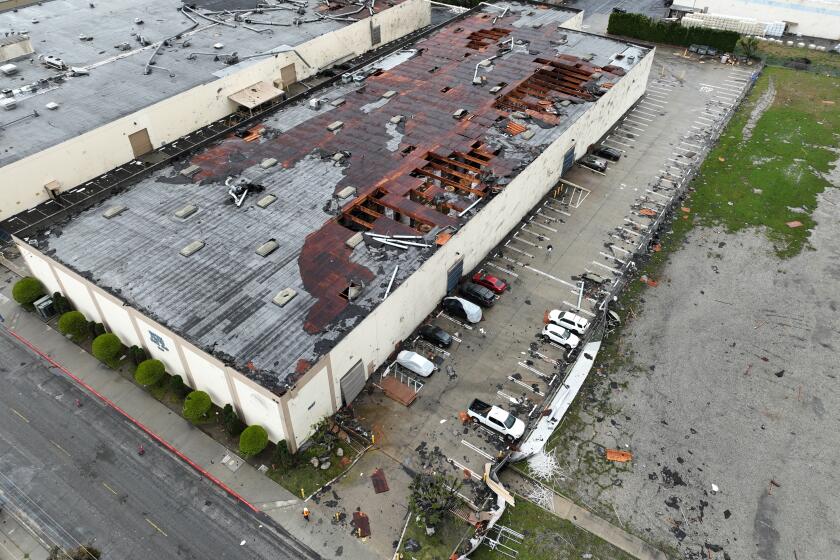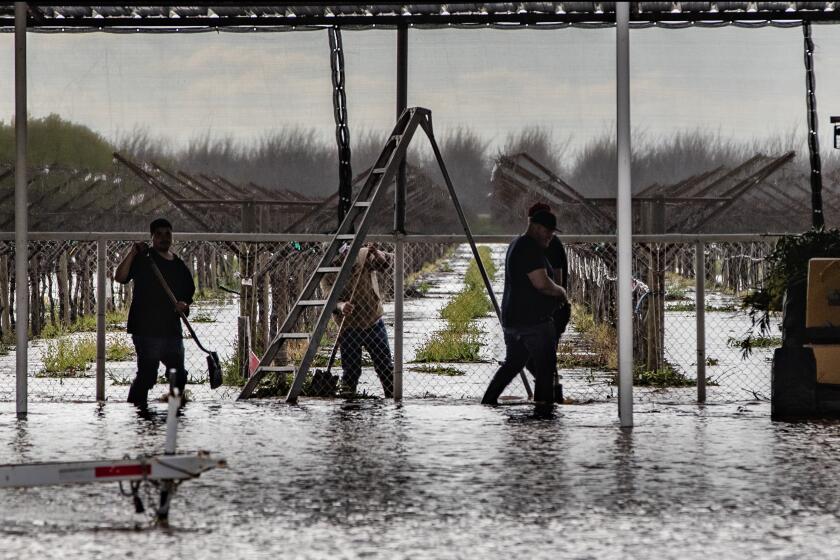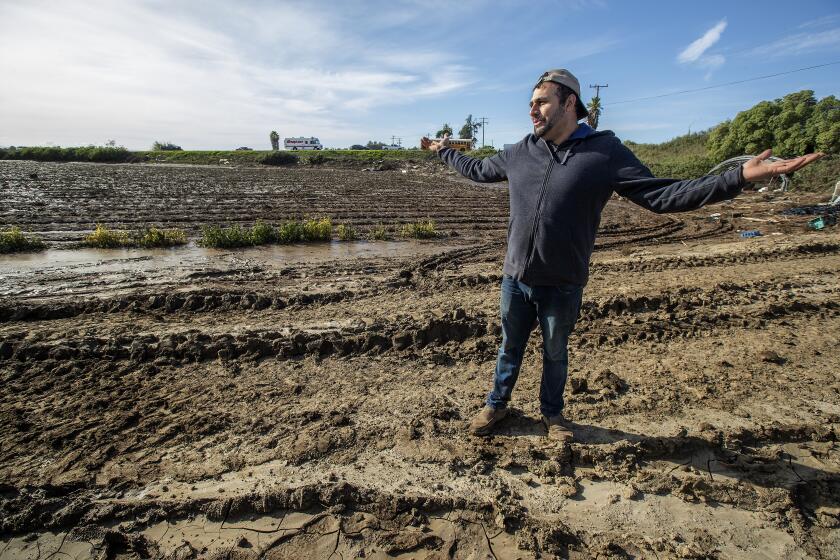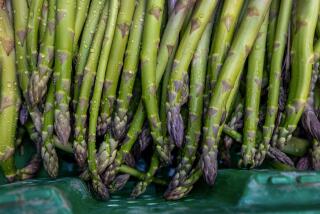This is why your strawberries were so meh this season until now
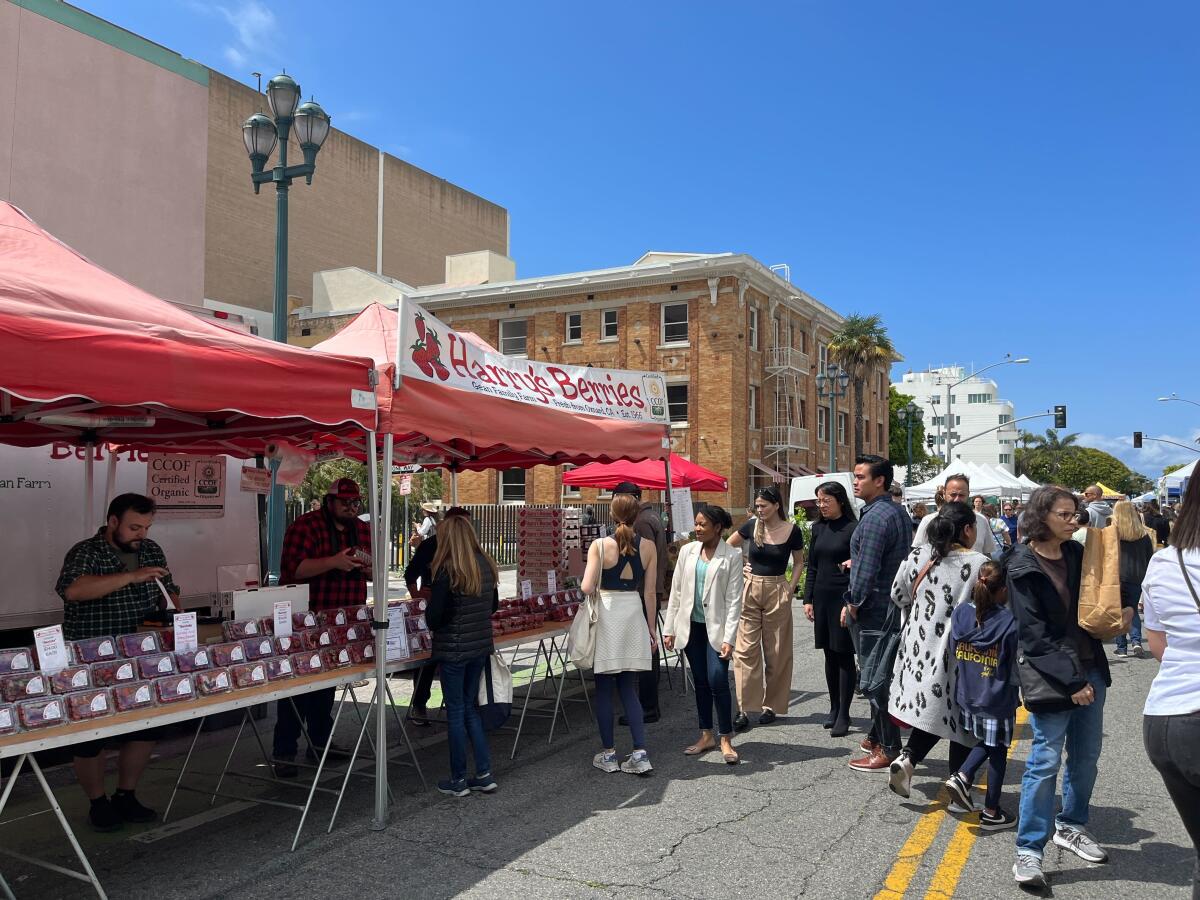
- Share via
You can blame California’s wild winter for all sorts of havoc this spring and summer: moldy, leaking roofs, plagues of mosquitoes, cabin fever.
Giant, less-flavorful strawberries also deserve a spot on that list.
California produces 90% of the nation’s strawberries, which typically enjoy a growing season that starts as early as January and lasts until July. Peak season usually begins in March. But this year, thanks to a series of deadly atmospheric rivers this winter and spring, a deluge of rain flooded the state’s strawberry fields in Watsonville and Salinas, washing away two to three months of the season. Earlier reports this year have estimated $200 million in damage to crops, property and equipment. The California Strawberry Commission confirmed at least $100 million in crop loss.
“We lost 1,300 acres of strawberries. We are delayed. Even fields that have not been flooded have been delayed about two months,” said Mark Bolda, a farm advisor in Santa Clara County who specializes in strawberries and caneberries.
As the unseasonably cool weather continued, recovery was slow. Damaged plants had smaller leaves to absorb sunlight and photosynthesize. And with more cloud cover and less sunlight, the plants retained excess water and stored energy in starch reserves, affecting both their size and their flavor.
The recent rains provided a major boost for some small businesses. But for others, it spelled disaster.
“Normally by March and April, we would get sunshine,” said Kohl Gean, a deliveries and farmers markets manager at Harry’s Berries, which advised its social media followers in April that due to the weather, the strawberry season would be three months shorter than usual.
When Zandler Chavez, who works at the Harry’s Berries stand at the Santa Monica Farmers Market, sampled the berries about six weeks ago, the difference in flavor, he said, was obvious. “I just took a bite and it tasted like pure water from the tap and it’s kind of weird.”
Per regulations established by the U.S. Department of Agriculture, growers cannot pick flooded fields for commercial purposes until two months after the recession of the waters due to food sanitation concerns.
“If they have fruit on there, they get picked and thrown away,” Bolda said.
Though recent storms have cut California’s drought by half, record snowpack will increase the threat of spring flooding, forecasters say.
Most farms have fixed costs such as labor and planting, as well as forward contracts that set berry prices for wholesalers in advance, Bolda said. These factors make the shorter strawberry season a challenge for growers as they make adjustments.
“Strawberries used to have that advantage of being earlier in spring. Now all the other stone fruits are coming in and the growers are competing with all that other stuff,” he said.
For Harry’s Berries, the financial hit meant increasing prices — the wholesale price for a box went up to $14 — and adding more jams and juices to the lineup to make up for the lost revenue.
“This year we had to go up by $2, just due to the amount of damage that we took from the rain and just the cost of production,” Gean said. Normally, Harry’s Berries may increase its prices in a given year by about 50 cents to a dollar.
Bolda added that 70% of the cost of production for strawberries is labor. With devastated fields and less produce to pick, many found themselves out of work this season.
After a series of violent storms, California farmworkers must cope with flooded homes, dangerous job conditions and lost wages.
Chepe Cervantes, an undocumented migrant worker in Oxnard who has been picking strawberries for 20 years, said that in a usual strawberry picking season he would earn $8,000. This year, he’s earned only $5,000, which has made it harder to meet the $2,200 monthly rent for his family of six. According to federal law, undocumented workers are ineligible for unemployment assistance and FEMA disaster aid.
Gov. Gavin Newsom announced recently that starting in June, there will be $95 million in aid to undocumented residents who have suffered from the floods. This comes after the state received criticism for a delay in Rapid Response Funds.
“There was just a lot less work to go around. Sometimes they would only have three or four hours of work two days a week. It was really hard to get a paycheck during that time,” Cervantes said through an interpreter. He had to rely upon financial support from extended family members. Now, strawberry pickers like him are following the strawberry harvests as they shift north in the state to Santa Maria and Salinas as well as to Oregon.
For their part, food businesses and restaurants have adapted to the fluctuations this season.
For dessert shop Perfectly Sweet in Alhambra, manager Michael Aqleh continued to purchase about 72 boxes of strawberries from Costco per week for his shop’s signature strawberry shortcakes. He said he saw a unit price change from $6.49 per box in March to $7.99 in April around the time of the floods. Prices are going down, though, as the strawberry supply is slowly increasing: His trip last week yielded boxes for $5.49 each.
Alex Bolar, the owner of a Los Angeles-based baked goods pop-up, Eclair, said that in recipe development, he delayed the switch to strawberry-based dishes. “We expected to get rid of winter fruits like oranges and citruses” earlier in the season, but instead Bolar kept them on the menu.
Finally, though, despite the June gloom, strawberries have begun to shrink in size and sweeten in flavor.
“[We] switched to berries about three weeks ago,” he said.
More to Read
Inside the business of entertainment
The Wide Shot brings you news, analysis and insights on everything from streaming wars to production — and what it all means for the future.
You may occasionally receive promotional content from the Los Angeles Times.
